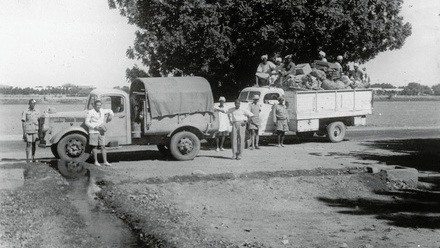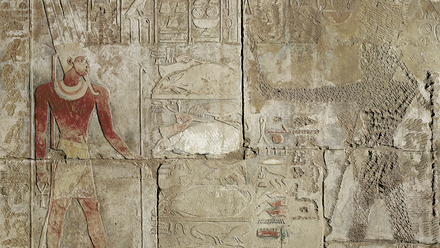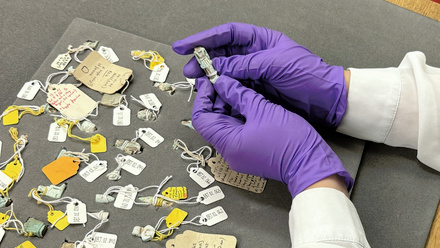Archive Glass Negative Conservation
Since we last reported to you, work on the Society's collection of glass negatives has continued apace. The collection, which includes many thousands of historic photographs from sites such as Tell el-Amarna, Abydos, Deir el-Bahari and Saqqara, is an important part of the EES Lucy Gura Archive, and the Society has taken very seriously its responsibility to preserve this collection for the future.
You may remember that in July 2011, we began refurbishing Ricardo Caminos' old kitchen in no. 4 Doughty Mews. Once the refurbishment was complete, we began the big task of moving each of the Society's 15,000 or so glass negatives into acid-free pHoton folders, stored inside conservation standard archival boxes. This work, carried out by an able team of conservators and volunteers, has meant that almost all of the glass negatives are now in appropriate storage, ensuring that we are able to preserve them for future generations of researchers.
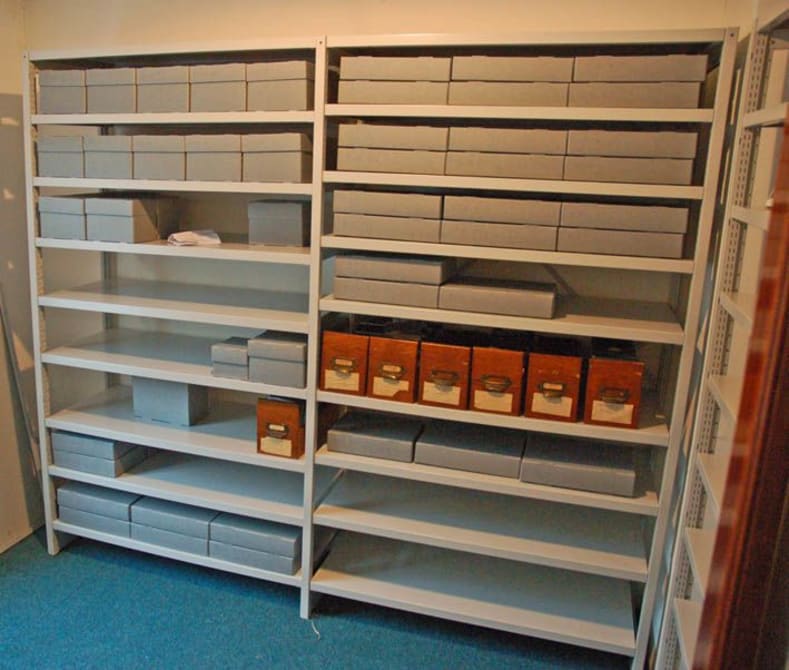 The new archive space filling up with rehoused negatives
The new archive space filling up with rehoused negatives
This work has been supported by many people - not least all of our members, whose subscriptions fund work like this. In particular, we were overwhelmed by the response to the 2012 Amelia Edwards Projects fundraising campaign - every project received significant donations, and as a result we were able to re-house glass negatives from the work of Flinders Petrie (one of the six Projects).
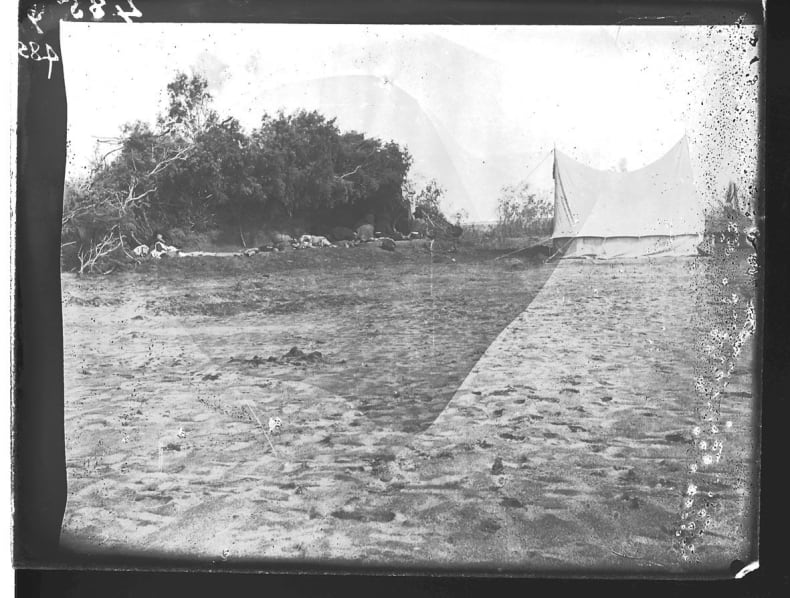 One of Petrie's series of photographs from his work in the Delta
One of Petrie's series of photographs from his work in the Delta
Our sincere thanks also go to Yvonne Buskens, a long-standing Member of the Society, who generously supported the re-housing of the glass negatives of Henri Frankfort from his work at Abydos. These beautiful images are now safely stored for the future - thanks Yvonne!
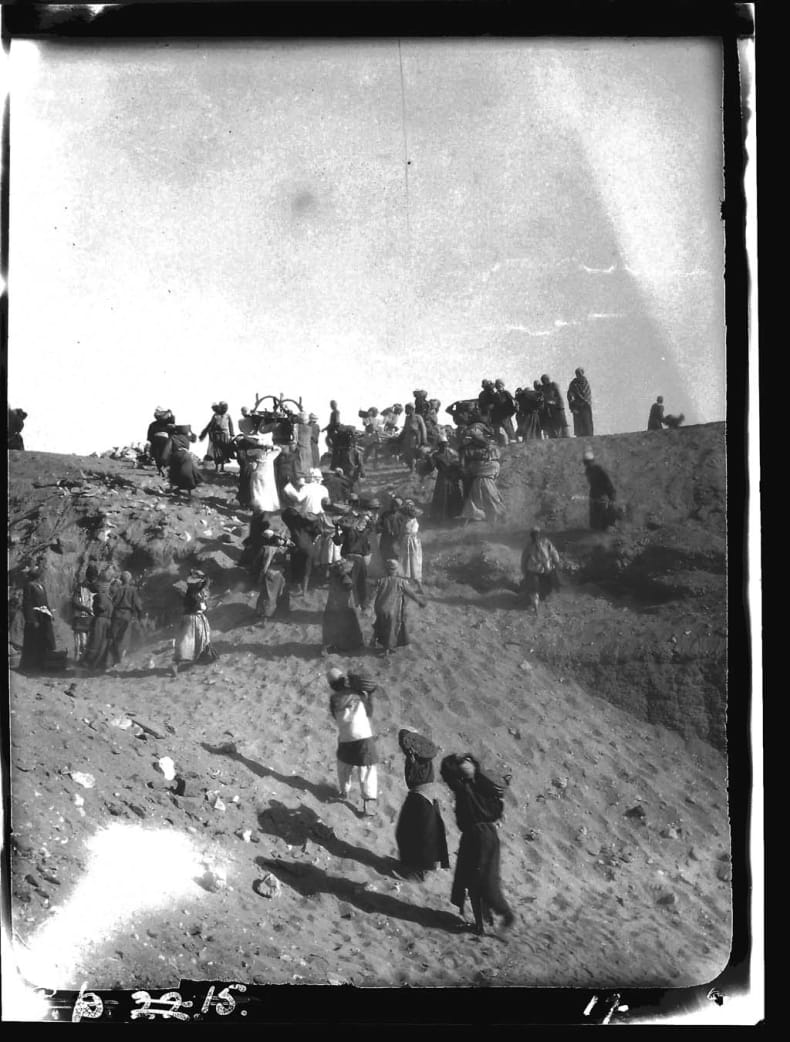 One of the images taken by Frankfort of the work at Abydos
One of the images taken by Frankfort of the work at Abydos
We have also benefited from the voluntary assistance of a team of specialist conservators from the Conservation Atelier of the Department of Photography, Film and TV, School of Performing Arts in Prague, who first offered their services in 2012, and returned recently to continue their work, having secured funding from their home institution to complete the work. During their first visit, the conservation team focused on rehousing work, and assessing the damaged plates. Their return visit was devoted to mending those plates which had been broken by the less than ideal storage conditions in which the negatives were originally kept.
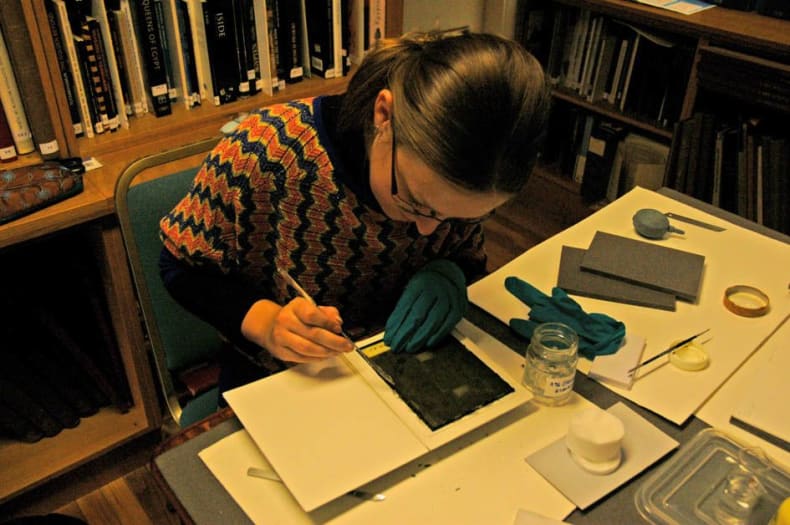 One of the team mending a broken plate
One of the team mending a broken plate
The repair process involved placing each fragment of broken negative, image side downwards, onto a fresh sheet of glass, thereby 'sandwiching' the silver nitrate image between two sheets of glass, and preserving it. Starch paste was used to seal the edges between the old and new sheets of glass, allowing this work to be quickly and safely reversed, should it ever become necessary.
Thankfully all the glass negatives had been scanned in 2007, thereby preserving the images on the negatives, but these mended plates are of course important in their own right as archival objects and we are grateful to Petra and her team for their hard work and to FAMU for their assistance in sending the team over. We look forward to their next visit!

